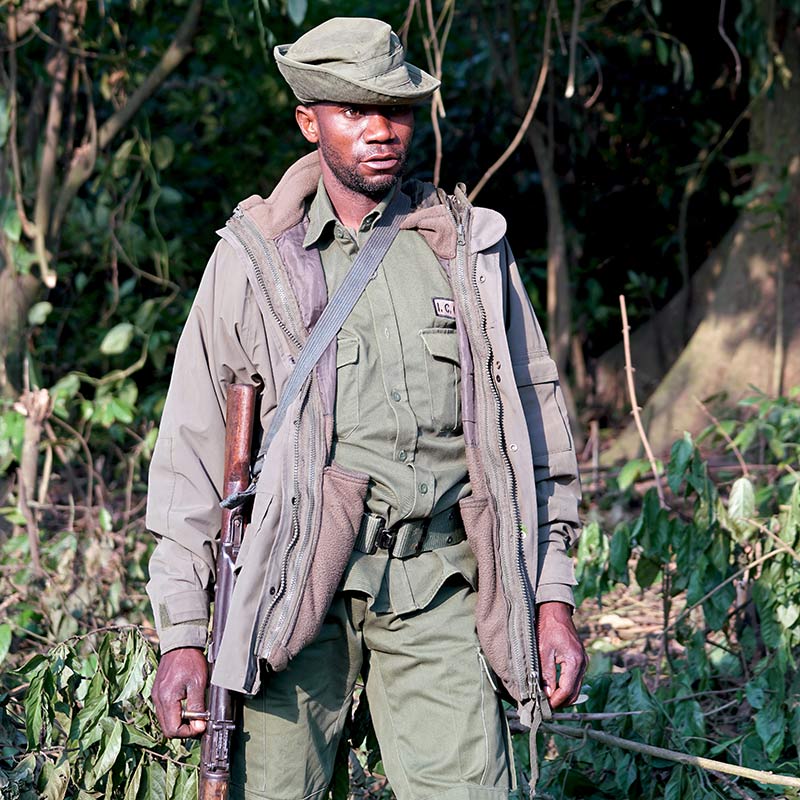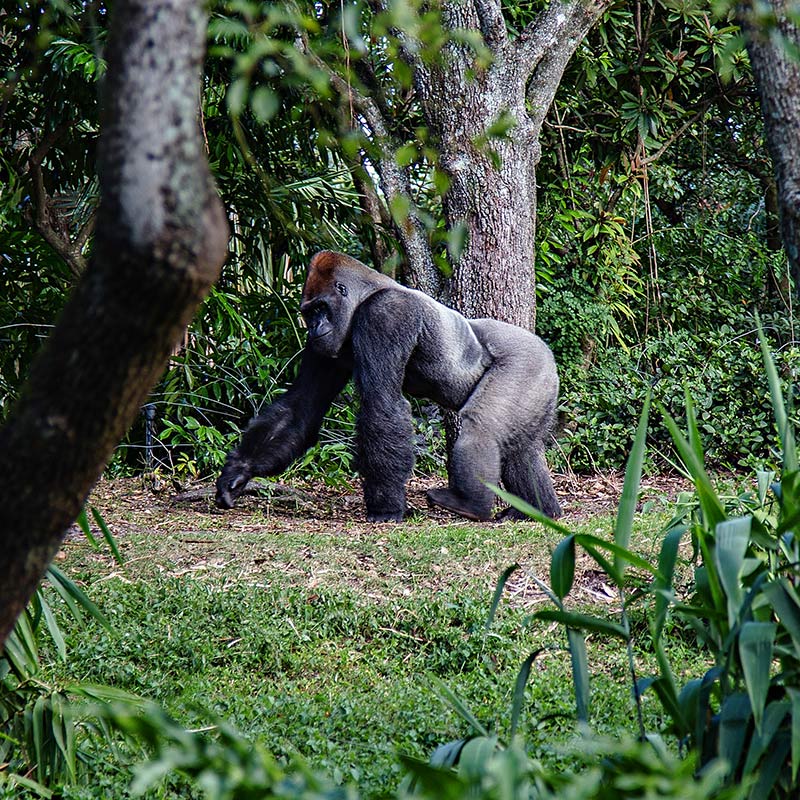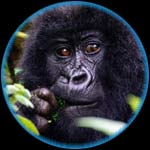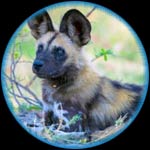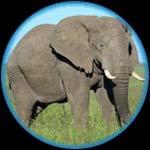SQUARE MILES
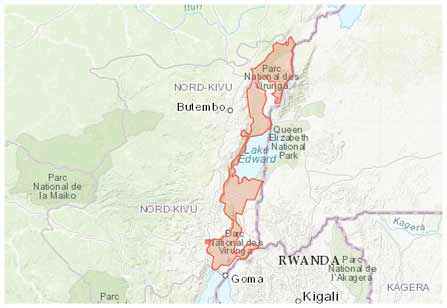
LOCATED IN THE DEMOCRATIC REPUBLIC OF THE CONGO, IT COVERS APPROXIMATELY THE SAME AREA AS DELAWARE & RHODE ISLAND COMBINED
STRONGHOLDS FOR: EASTERN, MOUNTAIN AND CROSS-RIVER GORILLAS, CHIMPANZEES, HIPPOS, AND FOREST ELEPHANTS
IT IS AFRICA’S OLDEST AND MOST BIOLOGICALLY DIVERSE PROTECTED AREA AND HAS BEEN ON THE LIST OF ‘UNESCO WORLD HERITAGE SITES IN DANGER’, SINCE 1994
VIRUNGA FACTS

Virunga National Park was founded in 1925 by Belgian colonial authorities. It is situated along the equator in the Albertine Rift valley in the Democratic Republic of the Congo (DRC). There are two active volcanoes in the park, which are responsible for its incredibly diverse environment and inhabitants. Virunga National Park also contains savanna, swamp, lake and river ecosystems as well as impenetrable forests. Virunga was placed on the UNESCO World Heritage Sites List in 1979. Political instability, resource extraction and poaching, resulted in the park being placed on the list of World Heritage Sites in Danger in 1994.
Virunga National Park has extremely diverse mammal, bird, reptile and amphibious populations. It is also home to numerous species of plant-life. These include 2,077 unique plant species, 264 tree species and 230 species of plants, exclusive to the Albertine Rift Valley. African Elephants play an important role in the distribution of seeds in the grasslands, by consuming these plants. We know this because African Elephant dung has consistently been found to contain samples of various seed types. This is only one of many examples of how important it is to maintain balanced ecosystems.
VIRUNGA UNIQUE FEATURES

The Congolese National Park Authority
The Congolese National Park Authority is a force of over 625 Rangers, who patrol the park daily. In order to qualify to serve as a Ranger, men and women must complete a six-month training regimen. These dedicated Rangers patrol the park on foot and by air in an effort to protect it from smugglers, poachers and damage caused by militia activity. Protecting Virunga National Park is a dangerous job. Since the founding of the Congolese National Park Authority, almost 1,800 Rangers have been killed. At least 12 Rangers were killed in 2018 and approximately 200 Rangers have been killed in the last 20 years. Nearly all these deaths were a result of conflicts with smugglers, poachers or militia.
Statistics like these suggest that Virunga National Park may be the most deadly conservation project on Earth.
VIRUNGA THREATS
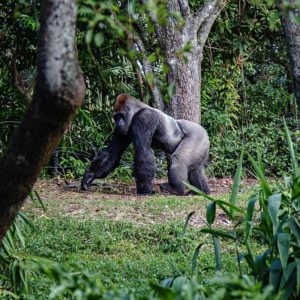
The park faces many threats. Some of the greatest threats to Virunga National Park’s wildlife, appear to be from oil exploration, poaching and militia activity. Oil exploration is illegal in the park. Although the park’s pristine wilderness has been protected since 1979, European oil companies continue to push their plans for oil extraction in and around the park. Exploring for oil can involve seismic testing, forest clearing, deep underground drilling and, ultimately, the installation of underground pipelines. All of these could damage Virunga National Park’s delicate ecosystem. These threatened habitats are populated by Endangered species such as Chimpanzees, Hippos, and Forest Elephants.
As with many protected areas in Asia and Africa, poaching of Elephant ivory, and even their skin, continues in Virunga National Park. There are also approximately 900 Mountain and Cross-River Gorillas left in the world. Roughly a third of them reside in Virunga National Park. Gorillas are poached for their meat and for their body parts, which are used in some medicines. They are also sold to private collectors as trophies. There are only 880 Mountain Gorillas left in the world. It is also a species with a low successful birth rate. These facts make poaching Gorillas is an extraordinarily heinous activity that continues to shrink their population.
The greatest threat to native inhabitants is pollution. Pollution introduces micro-plastics into salt, pesticides into produce and drinking water, and carcinogens into materials used to build furniture. Toxins like these have caused a drastic increase in birth defects, stunted growth in infants, cognitive and behavioral difficulties, obesity, diabetes and cancer.







